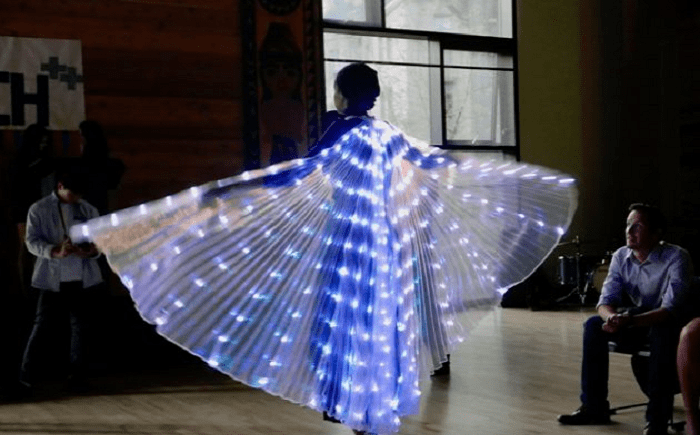Fashion Tech Revolution: Unleashing Innovation in the Global Fashion Landscape
In recent years, the fashion industry has undergone a seismic transformation with the infusion of cutting-edge technologies. From design to manufacturing and customer engagement, technology has revolutionized every aspect of the fashion landscape. Fashion designers and manufacturers now have access to a plethora of tools and solutions that enhance creativity, efficiency, and sustainability. This article delves into the profound impact of technology on the global fashion industry, exploring how it has empowered artisans, improved collaboration, refined manufacturing processes, enabled sustainable practices, and redefined customer experiences.

Empowering Artisans and Craftsmen
Advancements in technology have brought forth a renaissance for artisans and craftsmen. With sophisticated tools and machinery, they can now create intricate designs and patterns that were once limited by time and manual labor. Computer-aided design (CAD) software has empowered these artisans to experiment, iterate, and visualize their ideas with unparalleled precision. Additionally, digital tools enable seamless communication between designers and artisans, fostering collaboration and ensuring that traditional craftsmanship remains a vital part of the fashion industry.
Transforming Design with Information Gathering
Fashion designers now have access to an abundance of information that shapes their creative process. Technology has opened up vast repositories of data, from trend forecasting to consumer behavior analysis. Designers can draw inspiration from social media, blogs, and online fashion platforms to gain insights into emerging trends and customer preferences. Armed with this knowledge, designers can create collections that resonate with consumers, leading to increased market relevance and commercial success.
Enhancing Collaboration among Design Teams
In the age of globalization, fashion design teams are often dispersed across different continents. Technology has bridged these geographical gaps, enabling real-time collaboration and seamless communication. Cloud-based platforms and virtual workspaces facilitate the exchange of ideas, sketches, and prototypes, allowing design teams to work harmoniously despite physical distances. Such collaborative technologies have not only streamlined the design process but have also fostered a rich exchange of cultural influences, resulting in diverse and inclusive fashion collections.
Revolutionizing Manufacturing with Weaving and Finishing Technologies
Traditional weaving and finishing processes have seen significant advancements with technology. Automated looms and state-of-the-art machinery have increased production efficiency and minimized wastage. Moreover, the integration of smart fabrics and wearable technology has paved the way for innovative and functional fashion pieces. From self-heating jackets to color-changing fabrics, technology has elevated fashion into a realm of both style and substance.
Streamlining Production with Cutting, Stitching, and Packing Machines
The advent of sophisticated machines for cutting, stitching, and packing has revolutionized the manufacturing process. Computerized cutting machines ensure precision and minimize material waste, while automated stitching systems boost productivity and standardize quality. Additionally, smart packing solutions optimize storage and transportation, reducing the environmental impact and costs associated with logistics.
Fostering Sustainability through Improved Recycling Methods
Fashion's impact on the environment has come under intense scrutiny, but technology offers solutions for a more sustainable industry. Advanced recycling methods, such as chemical recycling and mechanical recycling, enable the conversion of textile waste into new fibers, reducing the reliance on virgin materials. Innovations in 3D printing also facilitate zero-waste design and production, ushering in a circular fashion economy.
Revolutionizing Product Showcase with Virtual Reality and Augmented Reality
The traditional runway show is no longer the sole method for showcasing fashion collections. Virtual reality (VR) and augmented reality (AR) have provided designers and manufacturers with immersive and interactive platforms to exhibit their products. Virtual fashion shows and virtual try-ons allow consumers to experience collections in novel ways, bridging the gap between the digital and physical shopping experience.
Leveraging Technology for Marketing, Sales, and Customer Service:
Fashion brands now leverage technology to engage customers, streamline sales, and provide exceptional customer service. Social media and e-commerce platforms have become indispensable tools for marketing and reaching wider audiences. AI-powered chatbots and personalized recommendation systems enhance customer experiences, leading to increased brand loyalty and repeat purchases.
Harnessing Data Analytics for Customer Insights
The collection and analysis of customer data have become pivotal in shaping fashion brands' strategies. With the aid of technology, designers and retailers can capture data on customer choices, preferences, and tastes. This data-driven approach allows for more accurate forecasting, inventory management, and personalized marketing, catering to individual customer needs and desires.
Conclusion
Technology's transformative impact on the fashion industry is undeniable, propelling the sector into a new era of innovation and sustainability. From empowering artisans and enhancing collaboration to refining manufacturing processes and elevating customer experiences, technology has woven itself into the very fabric of fashion. As fashion brands continue to embrace technology's boundless potential, the industry will witness further evolution, promising a dynamic and exciting future for fashion enthusiasts worldwide.
